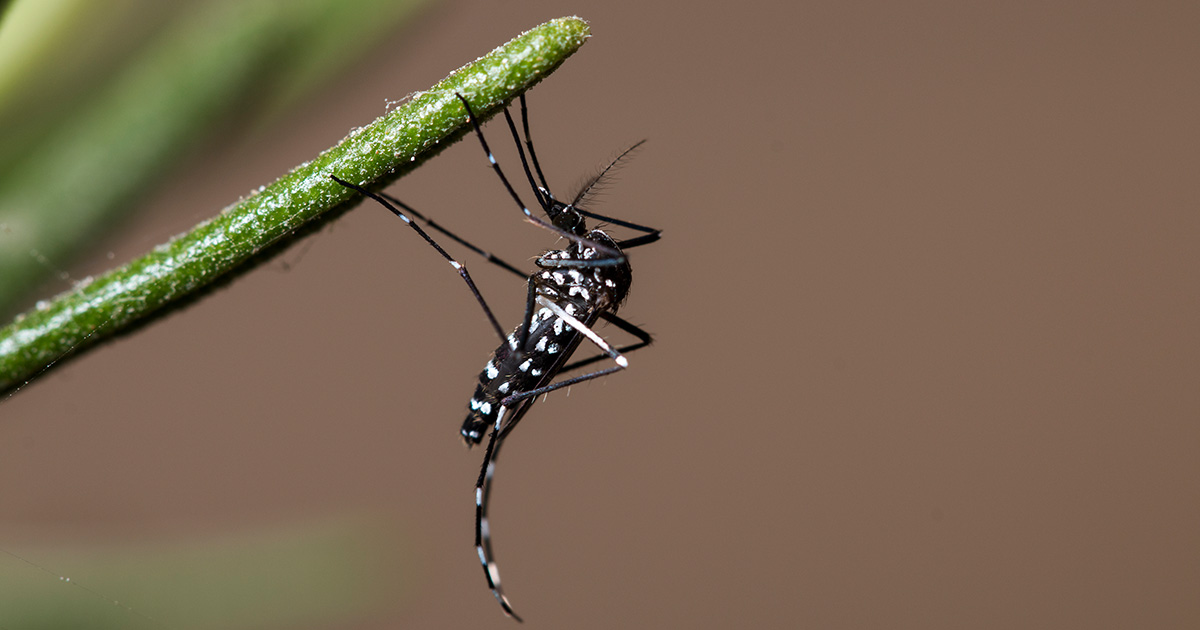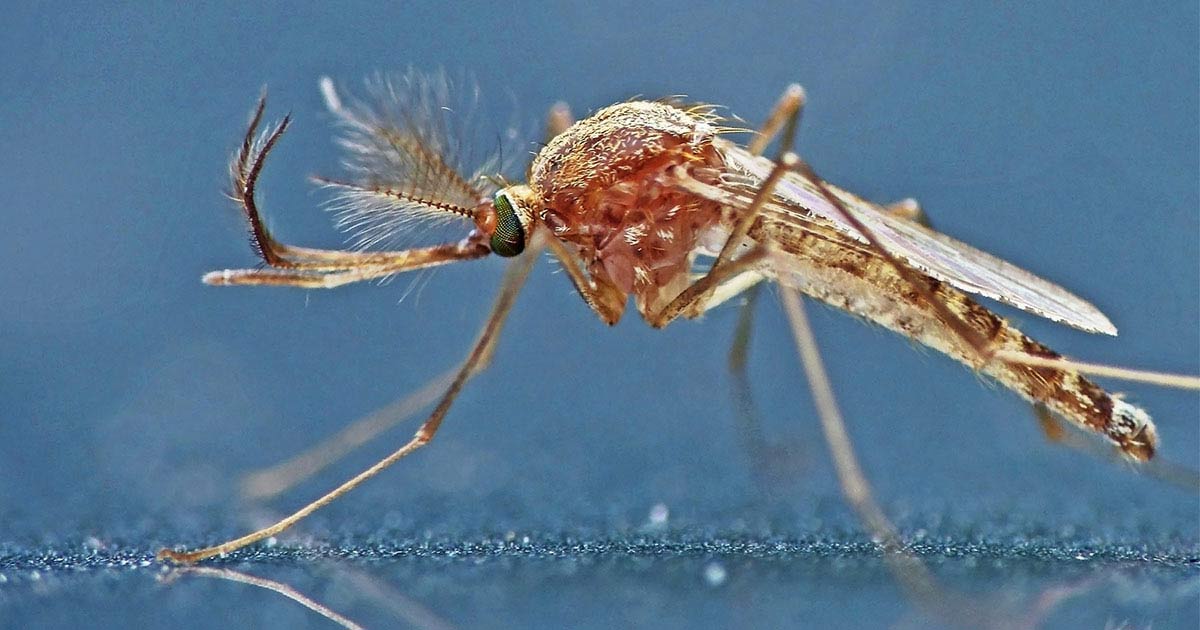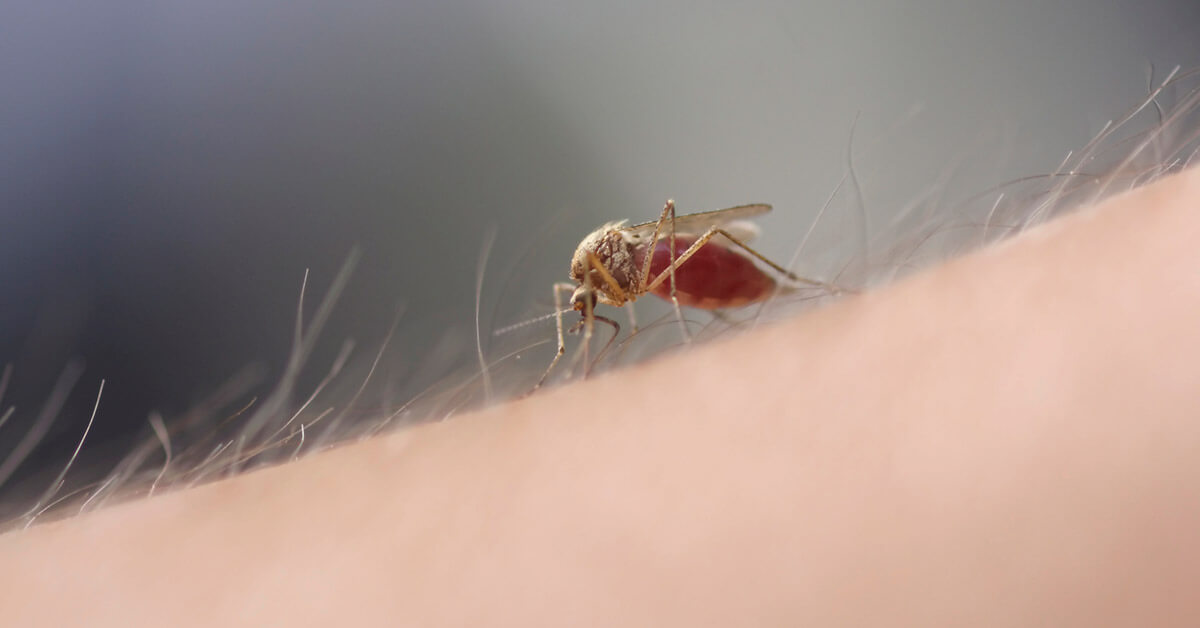Regional Report: Mosquitoes in Chicago and the Midwest
Often called "America's Heartland," the Midwest is known for its mix of small towns and urban centers — and an abundance of biting insects in both. Chicago, the nation's third largest city, is a leading population center for humans and mosquitoes in the region.
To help you learn more about mosquito issues in the Midwest and its urban centers, we spoke with mosquito expert Dr. Justin Harbison, assistant professor in the Department of Public Health Sciences at Loyola University in Chicago. Dr. Harbison is a partner with the Midwest Center of Excellence for Vector-Borne Diseases (MCE-VBD), one of four regional U.S. centers funded by the Centers for Disease Control and Prevention (CDC). The MCE-VBE was established in early 2017 to address emerging and exotic diseases carried by vectors such as mosquitoes.
Dr. Harbison spoke with us in early December 2017. The following interview is one of six regional mosquito expert reports available on Amdro.com.
AMDRO: Your work focuses on urban mosquitoes and large-scale control issues faced by cities. What is it about urban environments and urban mosquitoes that presents special challenges for mosquito control?
Harbison: Since government agencies started organizing mosquito control over a century ago, those efforts have been directed toward more urbanized areas. Mosquitoes are going to be where there's standing water. Surface water changes with drought and rain, but one of the most predictable areas where you can find standing water consistently in these population centers is much of our stormwater and floodwater systems.
Since organized mosquito control started, the most common sites treated are the catch basin sumps that are the initial entrance of runoff before rain goes into the stormwater system. Catch basins always, consistently hold standing water. Inevitably we see this in urban areas where there are more people. More development and more paved areas increase the runoff. It goes hand in hand.
Not every mosquito species can transmit diseases that we are concerned about. The stormwater in these catch basins is very polluted. Whatever is on the road or on these paved areas is flushed in there and captured in these basins. One of the mosquito species that does very well in these polluted environments happens to be one of our really important species when it comes to West Nile virus.
So, not only have we known for a century that these places can be consistent sources of standing water, but we also see a very direct connection with them and West Nile virus, which nationwide in the United States still continues to be our main focus for these organized control efforts.
AMDRO: Are the mosquitoes that thrive in these polluted catch basin environments what most people would think of as common mosquitoes?
Harbison: Probably not. When the average person goes out and interacts with mosquitoes, it's probably not one of these West Nile virus stormwater mosquitoes. These stormwater mosquitoes, or Culex mosquitoes, tend to prefer to bite birds. West Nile virus is essentially the disease of birds [transmitted to humans by mosquitoes]. These mosquitoes tend to bite during the night when we're not usually out and about.
When we hear mosquito complaints, these are typically about a different species of mosquitoes that tend to bite during the day and prefer to bite people. We refer to them as pest mosquitoes, because for the most part they're not going to be big transmitters of any diseases.
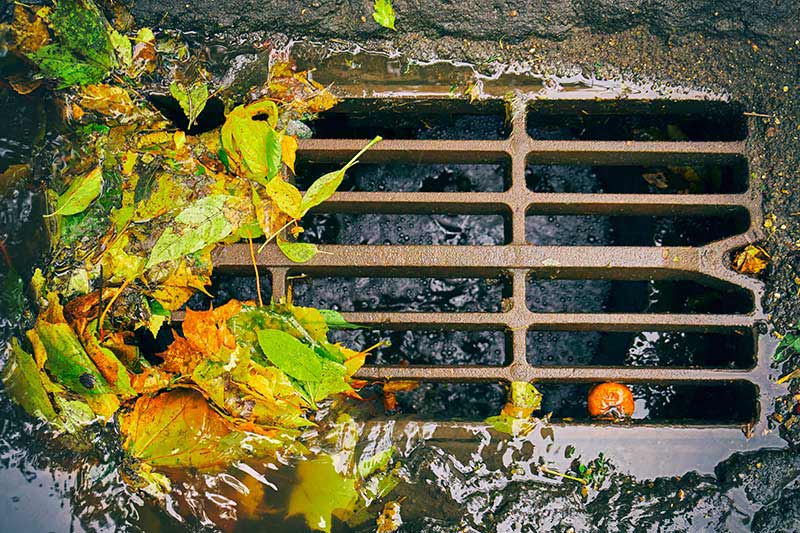
Since organized mosquito control started, the most common sites treated are the catch basin sumps that are the initial entrance of runoff before rain goes into the stormwater system.
AMDRO: This summer, some of the Asian tiger mosquitoes associated with Zika virus were found as far north as Madison, Wisconsin. What's the level of concern in the Midwest about these exotic species?
Harbison: Currently, the focus is still not on those mosquitoes. The Aedes albopictus you're referring to was found in Madison and Michigan this past year, and I think Iowa. Because of Zika virus, we're paying more attention and we're looking for it more. Not surprisingly, we find it. We find it periodically in downtown Chicago or Chicago proper, and we've found them in a couple of mosquito districts the last two seasons that are looking for it.
If you go south to Champaign-Urbana, that species, Aedes albopictus, is a predominant mosquito down there. But the thing I will note is that they don't have the diseases that are transmitted — or at least we're not seeing the human cases. We're not seeing Zika cases. We're not seeing dengue, yellow fever, etc. They're not there.
Nationwide with Zika, we believe right now we only had two cases in 2017 that were transmitted locally by mosquitoes. Compare that to West Nile virus where we've had more than 1900 cases. So, our focus is still on those West Nile virus mosquitoes, even though they haven't had the media attention recently.
AMDRO: You mentioned the Champaign area in central Illinois. Are the Aedes albopictus mosquitoes established there?
Harbison: Yes, I would say so. Part of the work these government agencies do is routinely monitor mosquitoes. There is a trap that is specifically almost exclusively set out to capture these Culex stormwater mosquitoes. In these Culex traps in Champaign and Urbana, they're starting to see Aedes albopictus, this exotic species, become more and more prevalent and almost kind of pushing out the Culex. They probably will use different habitats, but at least in what we're capturing down there, it really has become an established species. As we get warmer and warmer over the years, it is very likely that they will move up north.AMDRO: How do warming trends affect mosquitoes and the potential for mosquito-transmitted disease in the Midwest?
Harbison: Well, one of the challenges with trying to connect weather and climate change with mosquitoes is that mosquitoes operate on a small-scale, very micro habitat. Trying to do associations with any kind of large climate trends can be tricky. That said, around the Chicago area, when we have rainy seasons, we see more issues with pest mosquitoes. When we have more rains, we have more standing water above ground in our forest preserves, and that can be really good sites for these day-biting mosquitoes.
During drought years, like what we saw in 2012, those above-ground sources dry up. In areas with more people, we then see the stormwater structures come into play because that's where the only standing water is. People water their lawns and that runoff goes into those things. So, those drought years become important years for West Nile virus.
In the Chicago area, 2012 was our most recent outbreak year. That's when we had a really dry, warm winter and we had a pretty dry summer as well. So in that sense, weather and climate play a role. With warmer years, we're going to see mosquitoes being active for longer. If it's a rainier year, we'll probably see more pest mosquitoes. If it's a drier year, then West Nile Virus will play more of an important role.
AMDRO: What are the most important steps for urban dwellers to take to prevent mosquitoes and reduce mosquito populations?
Harbison: I would say have a realistic view of mosquitoes. Keep in mind, you can get many mosquitoes in just a very small little puddle or water source. It's a challenge. Certainly, everyone's encouraged to remove standing water when possible. But mosquitoes are found in some of the strangest places, like eaves, that we as homeowners living in these areas don't typically monitor on a daily or even weekly basis for standing water.
Doing your part not to create mosquito sources is important, but have a realistic view. If you abut a nature preserve, you're going to have mosquitoes. They're going to be a problem, even if on your property, you've removed all the standing water and you've totally treated everything. Mosquitoes can fly. They're going to fly back in and become attracted to you when you're outside. Basically, mosquitoes are around to stay, so having that understanding may help.
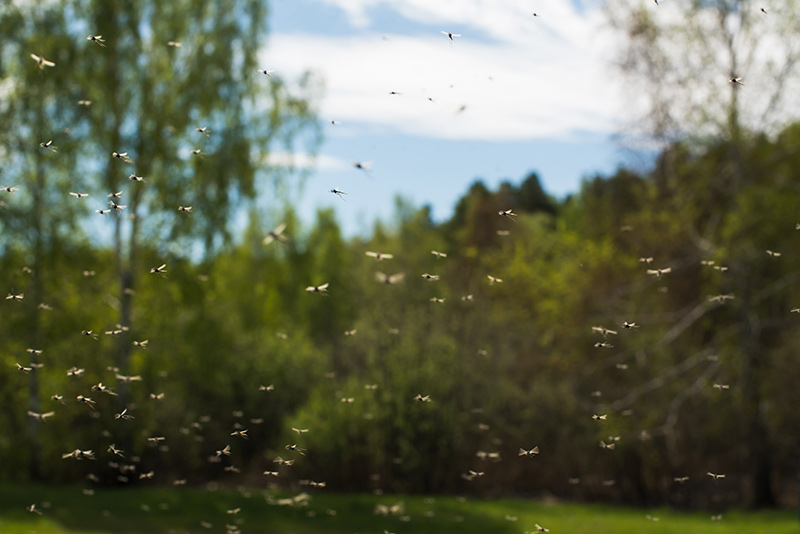
If you abut a nature preserve, you're going to have mosquitoes.
AMDRO: You spend a lot of time below the streets of Chicago, finding ways to improve urban mosquito control. Can you give us an example from your research?
Harbison: So, I'm going to bring it back to storm sewers. These catch basins are ubiquitous; they're everywhere in populated areas. Chicago area probably has a least a million. Historically, in treating these basins, we apply the larvicide, a large tablet or briquette that you just drop in there, in what's called an extended release that's labeled effective for up to 180 days. This is great for us because that can last for an entire season.
What we found though is that these stormwater systems are tricky. It's not like you're putting it in a pond. You drop a tablet in there, and it's going to stay in that pond. What happens with the systems is you drop one of these briquettes in, you get rain and you get water flushing in. That's what they're designed to do. Water gets kicked up within that basin.
What we think might be happening is these tablets either get flushed out as the inflow of the water comes into that basin, or they're getting buried within the nasty gunk and leaves in the sump area. We found that by moving away from the single, longer-lasting treatment to smaller pellets or granules, we can actually be much more effective. They are not as long-lasting, but if some of these pellets or granules wash away, you still have this active ingredient there.
AMDRO: Because so many of these urban breeding spots are outside the control of homeowners, do pesticides that target adult mosquitoes become more significant?
Harbison: Yes, certainly. You can address it by spraying your house, but spraying your house is not spraying your neighbor's house, and it's not spraying the woods near you. When we're treating with larvicides, even then, that's still not every standing water site. That's ones that we can access that we know about. So, again, there's still plenty of other sources there that are out there.
With the adulticides, it is a temporary fix. Depending on the weather, you knock down mosquitoes for a few days. Then the larvae grow up into mosquitoes and you get adults again, and mosquitoes can easily fly in as well. So, again, keeping a realistic view on these things, it's kind of doing your due diligence, doing as best you can to control what you can control. That's where adult sprays come in. Sometimes we just exceed that threshold because there are so many sources around.
AMDRO: What more should Midwesterners know for the next mosquito season?
Harbison: Try to avoid mosquitoes as best you can. Try to not be around when mosquitoes are biting. I know that's hard if you're going out gardening, so using a repellent can be good, too. The CDC recommends anything with 20 to 30 percent DEET, and that is kind of a sweet spot for that. If you get too little, it's not going to make enough of a difference, and if you get too much it can become a little bit toxic. It's not like with more active ingredient you get better control; there is a threshold. So, if you're going to go out and garden and mosquitoes are a problem, repellents are a good option to think about.Conclusion
Learning from the insights of experts is a valuable first step in protecting your family against established and emerging pest threats, including mosquitoes. The Amdro® brand is working to provide you with timely, authoritative information regarding mosquitoes, mosquito-borne diseases and effective mosquito control. You can count on Amdro® for the knowledge you need, when you need it, and premium pest control products to help you control and protect against mosquitoes and the threats they present.
This interview was edited for length and clarity.
Amdro is a registered trademark of Central Garden & Pet Company.

